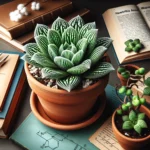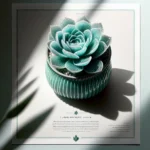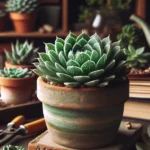Introduction to Haworthia
Welcome to the captivating world of Haworthia, the jewel in the crown of succulent enthusiasts! Like a treasure trove waiting to be explored, this genus offers an impressive variety that can leave admirers utterly mesmerized. So, where does this remarkable genus come from, and what makes it stand apart from its plump-leaved cousins, Aloe and Gasteria? Let’s dig in!
Hailing from Southern Africa, Haworthia has adapted to thrive in an environment where other plants might shy away. Imagine a resilient beauty forging a life amidst rocky crevices and sand-blown landscapes. Now that’s a plant with a story! These small, rosette-forming succulents pack a punch with their distinctive and diverse array of patterns, textures, and colors. Whether it’s the pearly luster of Haworthia cooperi or the striking stripes of Haworthia fasciata, each type offers a unique aesthetic delight.
But hold on, it’s not just about looks! One key feature that distinguishes Haworthia from its relatives is its toughness. While it shares the succulent nature of its relatives, storing water in its plump leaves to combat drought, it often boasts a more robust resilience to shade, making it a star performer indoors. So if you’re someone who tends to forget the watering can, these may be the forgiving companions you need by your computer as you ponder the perfect care for succulents. Haworthia doesn’t demand the sun-drenched spots that Aloe craves, making it a versatile companion for a variety of home environments.
To give you an idea, there’s nothing like watching a Haworthia make itself at home on a shaded bookshelf, bringing a touch of the serene beauty of the African veld into your living space. And when it comes to variety, the possibilities are vast. Imagine expressing your personal style through these beauties: some might go for the stark, architectural lines of Haworthia attenuata, while others might prefer the subtle, translucent allure of Haworthia truncata. The options are as endless as they are enchanting.
Discover more insights on flourishing with these succulent gems and learn how you can create your own miniature desert oasis.
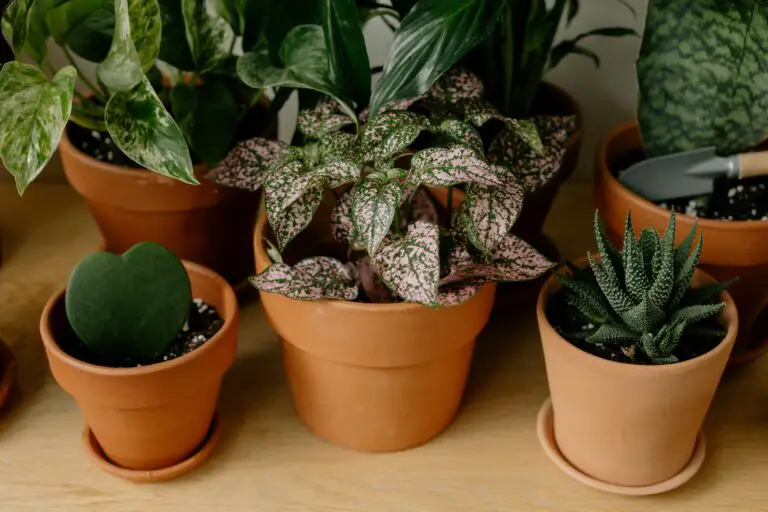
The truly remarkable thing about Haworthia is that it provides a playground for both the green-thumbed guru and the budding plant parent. They teach patience, reward care, and consistently surprise with their quiet growth and slow reveal of new, intricate details. In a world that moves at breakneck speed, these delightful plants remind us to pause and savor the understated elegance that nature offers. Truly, the universe of Haworthia is a microcosm of resilience, diversity, and unparalleled design that awaits any who wish to journey through its varied and verdant landscapes.
Recognizing Popular Haworthia Species
For succulent aficionados and green-thumbed novices alike, diving into the world of Haworthia can be as exhilarating as discovering a hidden garden. These succulents, with their understated elegance and remarkable forms, tease the curiosity and captivate the collector’s heart. Let’s explore some of the undeniable stars in the constellation of Haworthia varieties.
One cannot simply overlook the endearing appeal of Haworthia retusa, known for its star-like rosette pattern and translucent “windows” atop chubby, lime green leaves. It’s as if each leaf is a tiny windowed atrium, inviting light into its succulent core. This little gem embodies the quirkiness that makes Haworthias the treasure trove of the succulent world.
Haworthia fasciata, often mistaken for its cousin Aloe due to its similar appearance, is affectionately dubbed the ‘Zebra Plant.’ Its dark green, pointy leaves are striped with bumpy white bands, fashioning a pattern one might find on exotic wildlife. Imagine a tiny zebra’s back, undulating across your windowsill, basking in the gentle kiss of the sun.

Continuing our safari, the Haworthia attenuata thrills with its outward-spreading leaf arrangement and pronounced white tubercles. Like the raised hackles of a mystical sea creature, each leaf juts out, armed with white accents that double as sun reflectors, making it a formidable presence in any collection.
Now, if you’re wondering how to nurse these beauties to their utmost potential, a comprehensive care guide might just be your best resource. Keeping a Haworthia thriving is a fulfilling venture, akin to nurturing a living piece of art.
If intricate leaf patterns and distinctive textures are your calling, then you must meet Haworthia cooperi. Enveloped in semi-transparent leaves, this species can appear almost ethereal with its dewdrop-like foliage. It’s as though you’re peering into a glistening clump of glassy marble bulbs, each one an ornate spectacle of natural design.
Seeking more knowledge on these fascinating succulents? Delve into the wonders of various succulent types, where Haworthias shine amongst their prickly peers. Avid collectors and aspiring green thumbs, alike, can find inspiration in the endless versatility of these drought-tolerant darlings.
Every Haworthia species invites you on a unique journey, one where the roles of observer and cultivator merge. As you aid in their growth, you not only gain a deeper appreciation for biodiversity but also become an integral part of their story—one that’s written in the soil and flourishes under your care.
Rare and Unusual Haworthia Types
For those who’ve embarked on the succulent-collecting voyage, discovering rare and unusual varieties of Haworthia is like unearthing treasure troves tucked away in the world’s arid corners. These exotic plants, often hidden gems within the succulent realm, come with a fascinating allure that begs further exploration—welcome to the captivating world of lesser-known Haworthias.
Diving into the Haworthia universe, you’ll find that what makes these types truly rare isn’t just their scarcity but the unique visual symphonies they compose. Take the Haworthia truncata, also known as the ‘Horse’s Teeth,’ for example—with its bizarre, flat-topped leaves peeking out of the soil, it’s a living piece of natural abstract art!
Then there’s the enigma of Haworthia cooperi, boasting translucent, bulbous leaves that shimmer like a cluster of dewdrops in the morning sun. It’s the perfect illustration of nature’s ability to showcase beauty in the most unexpected forms.
But the rarity of these Haworthias isn’t just a feast for the eyes—it also presents a delightful challenge to the diligent enthusiast. They’re often less common in cultivation, which means caring for them turns into both a science and an art. As a collector, you’re tasked with mimicking their native, often harsh environments, ensuring these succulents thrive and divulge their full glory.
Let’s not forget the undeniable cachet that such rare Haworthias add to any collection. It’s akin to possessing a secret garden of sorts, with each plant telling its own tale of survival, adaptation, and beauty. Whether it’s the understated elegance of Haworthia emelyae var. multifolia or the starkly striking appearance of Haworthia maughanii, these rarities can transform a casual interest into a passionate pursuit of succulent sophistication.
The appeal of including rare Haworthia types in a collection stretches beyond the thrill of the hunt or the joy of nurturing. It’s about curating a living mosaic of nature’s most innovative designs. By integrating these conversation starters into your home or garden, you’re not just cultivating plants; you’re nurturing stories, each with its own unique chapters written by the earth’s evolutionary pen.
While nurturing your succulent collection, you may encounter Haworthia’s mainstream siblings, often spotted gracing local nurseries with their presence. Yet, it is within these rare types that the genus’s true diversity shines—a manifestation of survival and splendor.
Whether displayed on a sun-drenched windowsill or grouped in a tapestry of potted enigmas, these peculiar Haworthias demand attention and ignite curiosity. They are natural sculptures, frozen in time yet very much alive, challenging us to expand the boundaries of our succulent horizons.
Haworthia Care Essentials
Welcome Haworthia hobbyists! Whether you’ve just stumbled upon the charm of these succulent gems or you’re a seasoned collector, you know that caring for Haworthia types can be as rewarding as deciphering hieroglyphs. With their plump, patterned leaves and stunning, transparent windows, these little plants pack a hefty dose of allure. Let’s talk shop—Haworthia care shop, that is!
Picture the ideal sunny spot in your home—that’s where your Haworthia can truly thrive. But here’s the kicker: they aren’t sun worshippers like other succulents. Imagine your Haworthia wearing chic sunglasses; they need bright light but not direct high-noon beams. A east or west-facing windowsill is their happy place.
Now, let’s get our hands wet, but not too wet. Watering a Haworthia is like crafting the perfect cocktail—it must be precise. Think of them as camel succulents; they store water in their fleshy leaves, ready for a drought. It’s best to wait until the soil is desert-dry and then give them a thorough soak. Over-watering can turn your succulent haven into a sodden nightmare, leading to root rot—picture an umbrella in a hurricane, utterly useless!
Speaking of bloopers, let’s chat about common pitfalls. Who among us hasn’t been overzealous with love and water? Remember, your Haworthia is an independent plant that prefers a bit of neglect over pampering. Treat it like that cool friend who doesn’t need constant check-ins.
Always eager to strut its stuff in the right conditions, your Haworthia will be the talk of your plant circle. And when you’ve mastered the balance of light and water, you’ll see your Haworthia flourish, much like a great performer finds their rhythm on stage.
Devoted care makes all the difference in a Haworthia’s life. With these tips, you’ll be navigating the world of Haworthia types like a pro. But remember, sometimes less is more, and with Haworthias, that mantra is gold.

Above all, enjoy the journey of growing these captivating succulents. With each new leaf and offset, your green thumb gets a little greener, and your home—a little more vibrant. So keep an eye out for your plant’s cues and let it guide you to becoming an incredible Haworthia caretaker.
Propagation and Growing Tips
Welcome, Haworthia aficionados! Whether you’re a seasoned pro or a succulent newbie, getting down to the nitty-gritty of propagating these striking plants can be incredibly rewarding. Let’s dive into the world of Haworthia propagation, where the promise of sprouting new specimens is just a leaf or seed away!
Unlocking the Secrets of Offsets Propagation
Think of offsets as nature’s generous gift – tiny replicas of your beloved Haworthia, keen to set roots and grow. These little ‘pups’ spring up around the base of the mother plant, eager to make their own mark. The trick? Wait until they’re a decent size, usually a few inches, so they have enough energy reserves. Gently twist them off, or use a sterile knife for those stubborn ones. Let them callous for a couple of days to prevent any unwanted bacterial soirees, then nestle them into well-draining soil. Before you know it, they’ll be standing tall, ready to continue the Haworthia legacy!
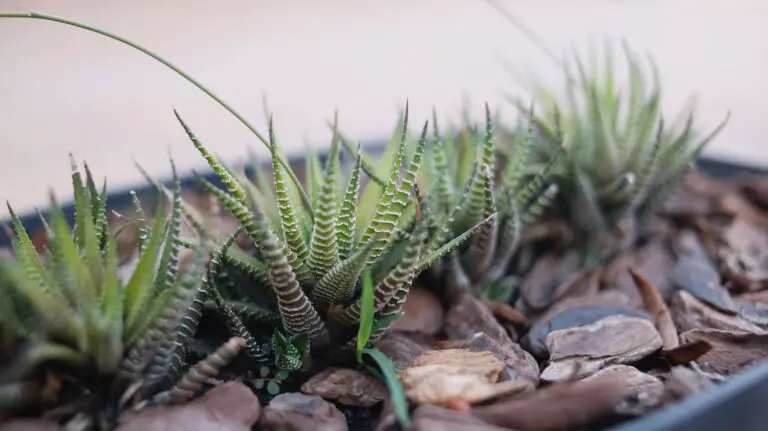
The Allure of Seed Sowing
For the patient enthusiast, growing Haworthia from seeds is like watching a slow-motion nature show. To start, you’ll need fresh seeds; the younger, the better, as their zest for life wanes with time. Mix sand with compost to concoct the perfect seedbed, evenly spreading your seeds on top. Don’t bury them, as they need light to germinate. A plastic cover works wonders for keeping moisture in, creating a cozy mini greenhouse. With patience, sunshine, and a dash of water, soon enough, you’ll witness the magic of tiny green sprouts ready to take on the world.
Soil Composition and Potting: The Perfect Home for Your Haworthia
Remember, Haworthia are the connoisseurs of well-draining soil. They crave a mix that’s like a gourmet meal, heavy on the perlite and sand to ensure their roots don’t sit in moisture too long and risk rot. Think of it as providing five-star accommodation for your prickly friends, with containers that have drainage holes for an express exit of any excess water. With the right soil and home, your Haworthias will not only survive, they’ll thrive, flaunting their rosettes and charming the pants off anyone who beholds them.
Now you’re equipped with the secrets to propagating and growing your own Haworthia brood. Remember, it’s all about the right touch and a little patience. Go on, get your hands dirty and bask in the glory of your gardening prowess!
Designing with Haworthia
One of the sheer joys of succulent gardening is the remarkable versatility you’ll find in the Haworthia family. Think of Haworthias as the green jewels of the plant world, perfect for adding a splash of vibrant texture and serenity to any living space. Whether nestled in a cozy terrarium, providing a touch of green on your office desk, or accentuating the rugged beauty of an outdoor landscape, haworthias are the go-to choice for enthusiasts looking to combine aesthetics with ease of care.
Considering a tranquil bedroom oasis? Picture a small, elegant Haworthia cooperi, with its translucent, dewdrop-like foliage, perched on a bedside table. Its understated elegance brings a calming presence to your private retreat. In the living room, a Haworthia attenuata, flaunting its bold, striated leaves, can become a striking centerpiece amidst minimalist décor, teaching us the beauty of patterns in nature.

For those who adore crafting unique terrarium landscapes, miniature Haworthia species are like small green sculptures, lending their rosette formations to mimic tiny forests in glass jars. Let’s not forget the outdoors, where larger Haworthia varieties, such as Haworthia limifolia, with ribbed, spiraling leaves, add intriguing textures alongside rockeries or when mass-planted as groundcover, proving resilient beauty under the open sky.
Now, imagine a patio transformed by an assortment of Haworthia in various containers. Cluster different types together in a group of terracotta pots for a curated, yet somewhat rugged collection, which looks particularly magical in the golden hours of dusk or dawn. Each Haworthia, a sculptural entity, plays a role in this live installation, offering a visual feast for the eyes and a testament to the variety and adaptability of these charming succulents.
Bring Nature Indoors with Haworthia
Within the contemporary urban dwelling, Haworthia varieties serve as natural artwork. Their maintenance is minimal, yet their contribution to the ambiance of a home is profound. Engage in the delightful endeavor of pairing these succulents with complementing pots—a matte black ceramic for a modern look, or a bright, hand-painted planter for that bohemian touch. The result is always a refreshing blend of natural texture and artistic flair, perfect for enlivening any indoor space.
The allure of Haworthia is not only in their individual charm but also in how effortlessly they bridge the gap between nature and cultivated living spaces. So whether you’re a seasoned haworthia collector or just beginning your succulent journey, embracing the allure of these varieties is sure to infuse your surroundings with a unique botanical narrative. Haworthias are not just plants; they’re living decor, ready to transform your environment into an evergreen tableau of delight.
Conservation and Sustainable Cultivation
Haworthia enthusiasts often herald the impressive resilience and variety of these succulents, yet few are aware of the precarious conservation status facing certain Haworthia types. Within the enthusiast community, there lies a tremendous opportunity to spearhead initiatives that both preserve and proliferate these botanical gems sustainably.
Across arid and semi-arid landscapes, Haworthias are subjected to habitat loss and environmental changes that threaten their existence. Real-life examples include species such as Haworthia cymbiformis, which, while not on the brink of extinction, have seen their natural habitats shrink due to agricultural expansion. It’s a wake-up call that even the hardiest of plants need our help to thrive.
Fortunately, cultivating Haworthia isn’t just a hobby—it’s a conservation act. By ethically sourcing these plants, enthusiasts can avoid contributing to the depletion of wild populations. One inspiring story comes from a community of gardeners who established a Haworthia sanctuary, sourcing their plants from responsible nurseries and sharing cuttings and seedlings to promote growth without harm.
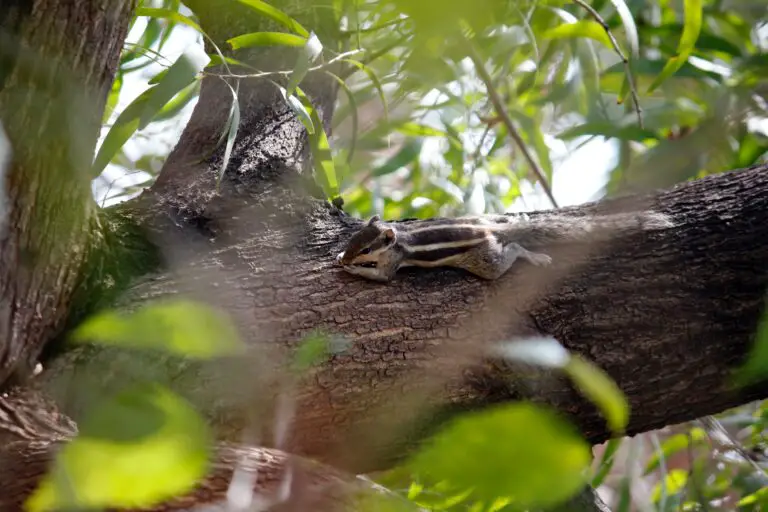
Moreover, the increasing popularity of Haworthias has fueled a rise in black market trade—a pressing issue that requires immediate attention. Enthusiasts are in a unique position to mitigate this by creating informed networks. Through social media groups and associations, they can exchange knowledge on legitimate vendors, thus fostering a marketplace that values the provenance and sustainable cultivation of these plants.
Ultimately, the relationship between humans and Haworthias can be a symbiotic one, where conservation efforts don’t just ensure the survival of these diverse types but also enrich our own gardening experiences. By committing to sustainable practices, we not only preserve these plant treasures for future generations but also become active participants in the stewardship of our planet’s biodiversity.
Frequently Asked Questions
Whether you’re a seasoned succulent collector or just starting to explore the diverse world of houseplants, “haworthia types” is a term bound to tickle your curiosity. These little, resilient wonders come in so many variations it’ll make your head spin faster than a stubbornly corked wine bottle!
So, let’s dig into some common inquiries! Ever seen a Haworthia reinwardtii and thought, “Is that a mini aloe or is my plant just happy to see me?” Don’t fret; it’s a genuine question many enthusiasts encounter. With its rosette pattern and plump, green leaves lined with pearly bumps, it’s easy to mistake it for its distant aloe cousin. But no, it’s all Haworthia – with a flair for masquerade.
And what’s with the Haworthia cooperi, you may ask? This variety’s claim to fame is its translucent leaves. Picture this: you’re gazing into a pond, pondering life’s mysteries, and there it is – the Cooperi, flaunting its see-through tips like little glass beads shimmering in your terrarium. Each leaf is a window to the soul of the soil, a peek-a-boo play for sunlight and admiration.
Oh, and let’s not overlook the Haworthia fasciata or the beloved “zebra plant.” With its white stripy attire, it’s like the stripey socks of the plant world – a fashion statement that’s hard to miss. It loves the limelight on a bright windowsill, just don’t give it a sunburn. Remember, like a fine wine or your favourite childhood comic book, Haworthias prefer not to bathe in direct sunlight.
Let’s address the towering question: How does one truly appreciate the Haworthia’s morphing magic? Why, through video, of course! To wrap your botanical brain around the Haworthia parade, have a peek at this engaging visual guide:
Finally, know that your Haworthia isn’t just a jewel in your plant collection; it’s a botanic buddy whose mood you’ll learn to read. When its leaves blush a deeper shade or shoot up like they’re reaching for an unseen high-five, it’s telling you something. Pay attention, offer a bit of water, and share a companionable chuckle over the latest plant meme. Your Haworthia gets you – it’s a companionship cultivated in the cozy corners of your living space.
Keep these questions and snippets of wisdom in mind, and you’ll navigate the Haworthia varieties like a seasoned sailor on the succulent seas. Every turn of the pot is a new adventure, each leaf a page in an unwritten diary of delightful greenery.
